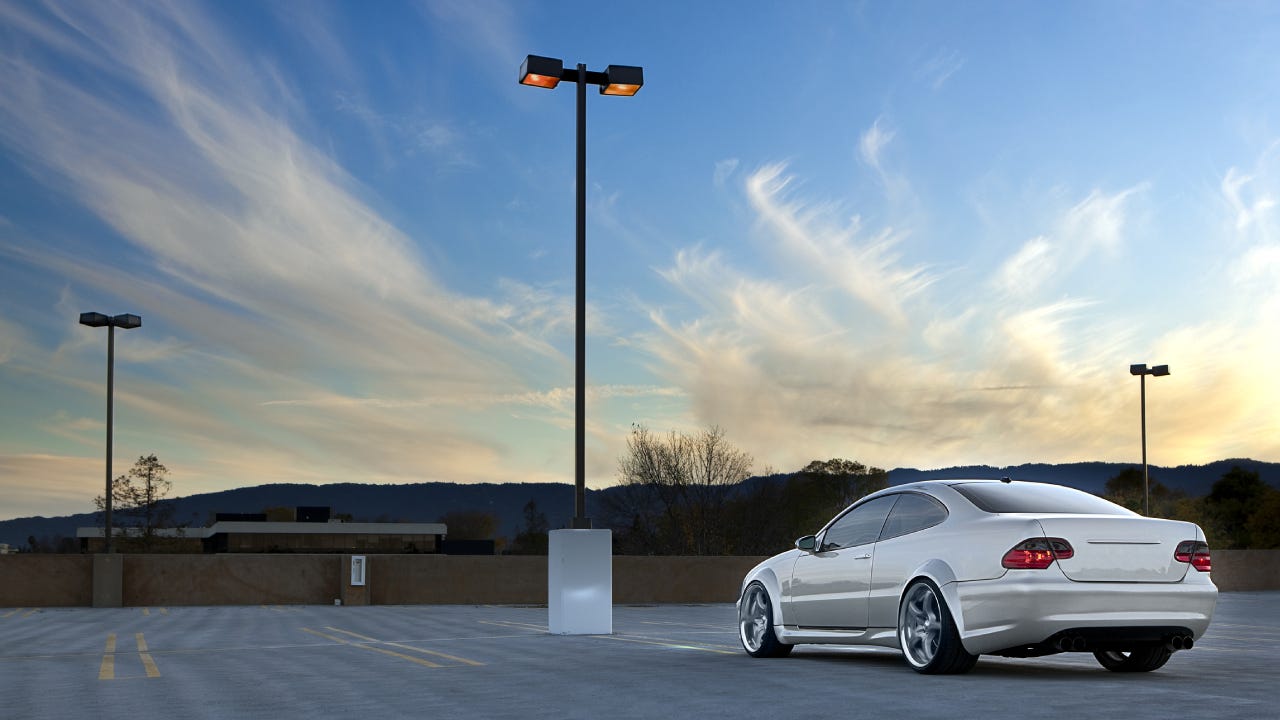Gap insurance in Texas

The Bankrate promise
At Bankrate, we strive to help you make smarter financial decisions. To help readers understand how insurance affects their finances, we have licensed insurance professionals on staff who have spent a combined 47 years in the auto, home and life insurance industries. While we adhere to strict , this post may contain references to products from our partners. Here's an explanation of . Our content is backed by Coverage.com, LLC, a licensed entity (NPN: 19966249). For more information, please see our .
Gap insurance, also known as debt cancellation insurance or auto loan and lease coverage, serves a vital purpose in Texas. It’s designed to safeguard you financially if your vehicle is stolen or declared a total loss, and the amount you owe on it exceeds its assessed value. Often, when you’re setting up a car insurance policy for a new vehicle, you might encounter gap insurance as an option. It’s also something that your car lease company might suggest. This insurance can be particularly relevant in scenarios where car depreciation outpaces the loan repayment, a common situation for new car owners in Texas.
What is gap insurance in Texas?
Understanding what gap insurance in Texas is can be crucial for vehicle owners. It’s an optional coverage that offers financial protection in specific scenarios, often beneficial for those who have recently leased or purchased a new vehicle and hold the original loan or lease. This type of insurance can be particularly appealing if the amount financed for a new car is close to the vehicle’s value.
In Texas, gap insurance is aimed at covering the difference between what your car is currently worth and what you still owe on it. For example, suppose your car is totaled, and you owe $25,000 on your loan, but the car’s market value at the time of the accident is only $18,000. This leaves a $7,000 gap. If you have gap insurance, it may cover this $7,000, potentially saving you from having to pay this amount from your pocket if your primary car insurance doesn’t cover the full loan amount.
How does gap insurance work in Texas?
Understanding how gap insurance functions in Texas involves considering several key aspects. Here’s a breakdown to clarify its workings:
Eligibility for newer cars:
- Gap insurance is generally accessible for newer vehicles.
- It’s a common misunderstanding that gap insurance is available for any financed vehicle, regardless of its age. However, typically, your car needs to be brand new or no more than a year old to qualify for gap insurance.
Distinction from new car replacement coverage:
- It’s important to differentiate gap insurance from new car replacement coverage.
- While both types of insurance are usually for newer cars, new car replacement coverage is designed to cover the cost of a new model of your totaled car.
To summarize these differences, if your new car is totaled and you owe more on your loan than the car’s current value, gap insurance aims to cover the financial “gap” left behind. New car replacement insurance, on the other hand, would contribute towards replacing your totaled vehicle with a new one. Gap insurance works by helping you clear any negative loan balance in the event you total your vehicle.
When do you use gap insurance?
Gap insurance is designed for very specific situations. Primarily, it comes into effect in cases where your car is considered a total loss. This could happen due to a major accident, other damaging events like a fire or if your car is stolen and not recovered. It’s important to note that gap insurance isn’t used for covering repair costs, no matter how expensive they are.
For instance, if a tree falls on your parked car and causes significant damage, gap insurance might be applicable if the insurance adjuster deems your car a total loss, and you owe more on your loan than the car’s current market value. In this scenario, if the cost to repair the damage is, say, $7,000, but the car is repairable, then this repair cost would typically be covered by your comprehensive coverage, not by gap insurance.
In essence, gap insurance is there to help you financially when your car is beyond repair, and the amount you owe on it exceeds its depreciated value. This specific coverage is a crucial aspect to consider, especially if you have a new car with a substantial loan amount.
Gap insurance vs other coverages
Gap insurance in Texas, while optional, shares some similarities with other standard types of car insurance. For context, liability insurance is a requirement in nearly every U.S. state, covering damages to the other party in an at-fault accident. Other insurance types, like comprehensive and collision coverage, are designed to protect your vehicle. Here’s how gap insurance compares:
| Type of Coverage | Gap Insurance | Comprehensive | Collision |
|---|---|---|---|
| What It Covers | Covers the difference between your car’s depreciated actual cash value (ACV) and the remaining balance on your car loan, if the loan amount is higher than the ACV. | Protects against non-accident-related damages to your car, such as those from natural disasters (floods, hail), theft, vandalism or encounters with animals. | Pays for repairs to your car after a collision, regardless of fault. This includes situations like hit-and-runs and damage from road obstacles. |
| Availability | Available from some insurers, as well as car dealerships, banks and credit unions. | Offered by most insurers as an optional addition. | A very common option provided by almost all insurance companies. |
How much is gap insurance in Texas?
When exploring gap insurance options, start by asking your car dealership if they offer it. Generally, gap insurance from a dealership tends to be pricier compared to options available in the wider insurance market or through finance companies. Investing time in research can lead to a policy that not only costs less but also provides broader coverage, along with quality service and efficient claims management.
A noteworthy point under Texas law is that the cost of your gap coverage should not exceed five percent of your loan amount. This guideline could help you gauge the fairness of the pricing you encounter.
Additionally, it’s wise to compare offerings from your current car insurance provider and other insurance companies or financial institutions. While gap insurance isn’t a legal requirement in Texas, it’s often considered a smart choice for those financing a new or nearly new vehicle.
Gap insurance companies in Texas
Some providers of gap insurance in Texas include:
- Associated Credit Union of Texas: You can either add gap coverage to your existing auto loan with ACU of Texas or opt for it during the loan application process. Refunds are available if the coverage is canceled within the first 60 days.
- Allstate: As one of the largest insurance companies in the U.S., Allstate provides gap insurance for its Texas customers. The insurer typically suggests this coverage for those who have paid less than 20 percent upfront for their vehicle, have auto loans extending 60 months or more or are leasing their vehicle.
- Greater Texas Credit Union: This credit union offers affordable gap insurance to its members, available up to 18 months from the start of the auto loan.
- USAA: Catering to military members, veterans, and their families, USAA offers gap insurance among its range of budget-friendly insurance options. If you belong to one of these categories, getting a quote from USAA for gap insurance could be a beneficial move.
- Texas DPS Credit Union: Its Gap Plus option includes not only the standard gap coverage but also deductible assistance in cases where your vehicle isn’t totaled. Additionally, it offers a $1,000 discount on your next loan with the credit union.
Frequently asked questions
-
-
No, gap insurance is not a legal requirement in Texas. While the state mandates certain types of auto insurance, such as liability coverage, gap insurance is optional. It is typically considered by those who are financing or leasing a new vehicle and are concerned about the potential financial gap if their car is totaled or stolen and they owe more on the loan than the car’s depreciated value. However, it’s always advisable to assess your individual financial situation and vehicle value to determine if gap insurance is a prudent choice for your circumstances.
-
Yes, you can typically cancel your gap insurance. If you decide that you no longer need the coverage or if your financial situation changes, most gap insurance policies allow for cancellation. The process and terms for cancellation can vary depending on where you purchased the policy – whether from an insurance company, a dealership or a credit union.If you cancel your gap insurance early, especially within a certain period after purchasing the policy, you might be eligible for a partial refund. It’s important to review your policy’s terms or contact your provider for specific details about cancellation and potential refunds. Keep in mind that canceling your gap insurance means you will no longer have coverage for the gap between your vehicle’s value and the amount you owe on it, should the vehicle be totaled or stolen.
-
Owing more on your car than it’s worth, often referred to as being “upside down” or having “negative equity” in your car loan, can happen for a few reasons:
- Rapid depreciation: Cars typically lose value quickly. New cars, in particular, can depreciate significantly as soon as they’re driven off the dealership lot. This depreciation can outpace the rate at which you’re paying down the loan, especially in the early years of a long-term loan.
- Small down payment: A smaller down payment, or none at all, can lead to owing more than the car’s value. Since you’re financing a larger amount, if the car’s value drops faster than you repay the loan, you could end up in a situation where you owe more than the car is worth.
- Long loan terms: Longer loan terms can also contribute. With extended payment periods, the principal is paid down more slowly, increasing the period during which you might owe more than the car’s value.
- Rolling over old loans: Sometimes, when buying a new car, any outstanding balance from an old car loan is rolled into the new loan. This can instantly create negative equity in the new vehicle.
- High interest rates: If your car loan has a high interest rate, a larger portion of your monthly payment goes towards interest rather than reducing the principal balance, which can lead to a slower reduction in the amount you owe compared to the car’s depreciation.
-
Since car insurance rates are based on numerous factors related to yourself and your vehicle, the cheapest car insurance company for one person may not be the cheapest car insurance company for another. The best way to find the cheapest car insurance for you is by requesting quotes from several car insurance companies for the same coverage types and levels and comparing them. If you are also looking to purchase gap insurance from the same insurer, make sure that insurer offers gap insurance before requesting quotes.
-
Related Articles



